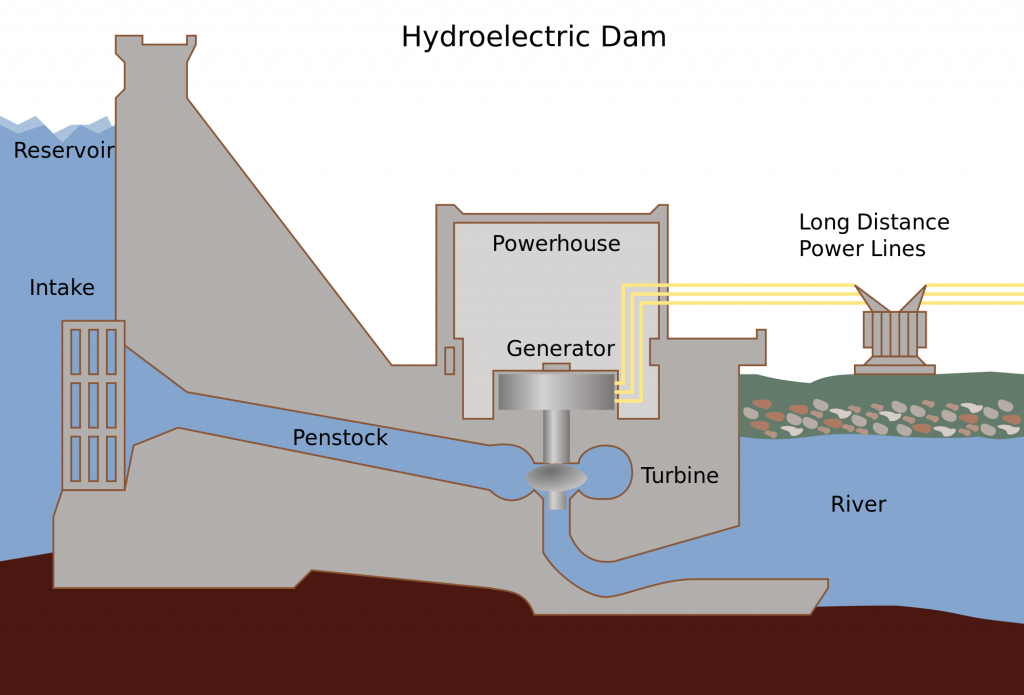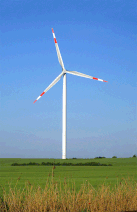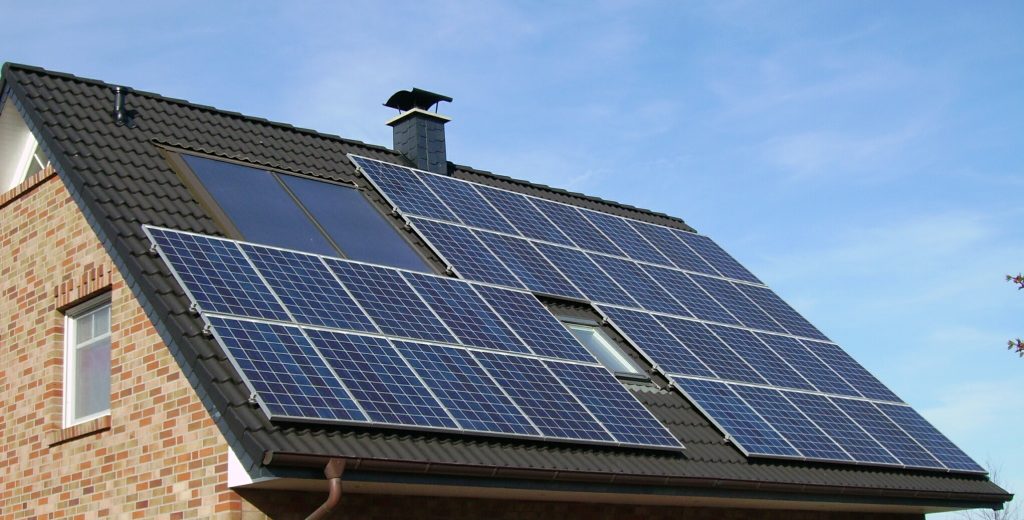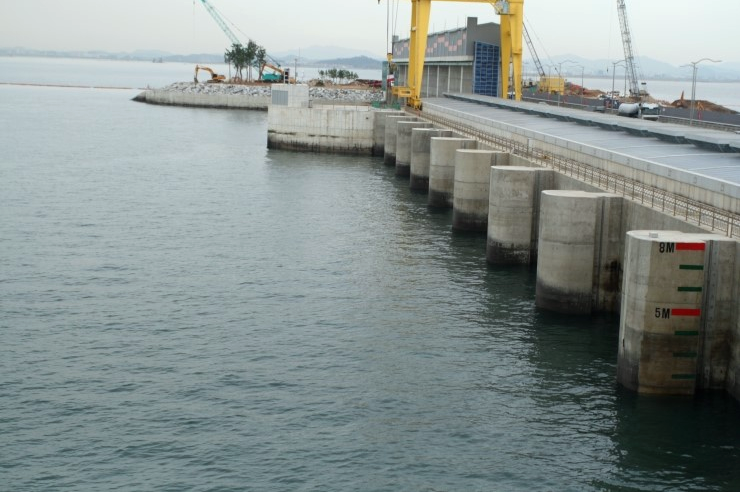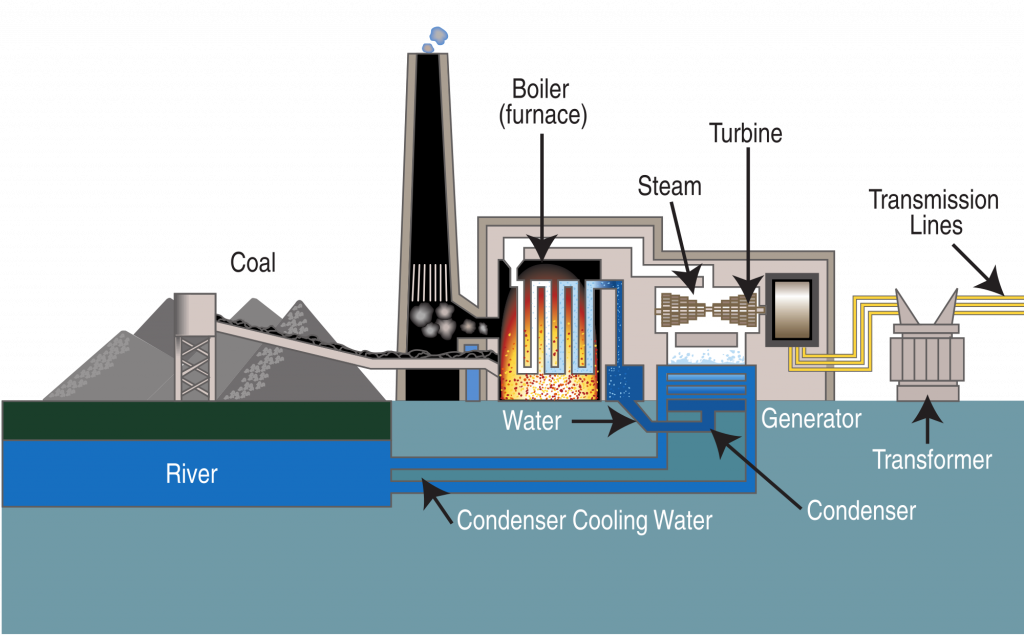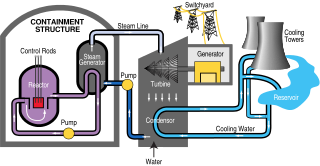Energy Resources
Energy Resources
Energy Resources can be classified as renewable or non-renewable.
Non-renewable energy resources will eventually run out (for example: coal, oil and gas)
Renewable energy resources will not run out (for example wind and solar power)
Renewable Energy Resources
Renewable energy resources include:
- Hydroelectric
- Wind
- Solar
- Tidal
- Wave
- Geothermal
- Biomass
Hydroelectric
Hydroelectric generators use moving water to drive turbines. Large scale hydroelectric power stations usually create a reservoir of water by building a dam. The water can then be released past turbines to generate electricity.
Advantages:
- No gas emissions
- Cheap to run
- Renewable
Disadvantages:
- Limited locations are suitable as there needs to be a supply of water and enough land to create a reservoir
- Building a dam and reservoir has an impact on the local environment (i.e. animal habitats, farmland)
Wind
Wind turbines use the kinetic energy of the wind to generate electricity.
Advantages:
- No gas emissions
- No fuel costs
- Renewable
Disadvantages:
- Low power output from each turbine so lots of turbines are needed
- Unreliable supply – they only work when it is windy
- Visual pollution – some people think that they spoil the landscape
Solar
Solar (photovoltaic) cells convert sunlight to electricity.
Advantages:
- No gas emissions
- No fuel costs
Disadvantages:
- Expensive to produce the panels
- Low power output
- Unreliable supply – they do not work at night
Solar energy can also be used by solar heating panels to heat water that can be used to keep a building warm, rather than generating electricity.
Geothermal
Geothermal uses the heat that is naturally occurring below the surface of the Earth. Water can be pumped down into the Earth’s crust where it is heated up. The steam produced can be used to drive a turbine and generate electricity at the surface.
Advantages:
- No gas emissions
- No fuel costs
Disadvantages:
- Expensive to build
- Only suitable in areas with the right geological conditions
Wave
The motion of waves in the sea can be used to turn turbines and generate electricity.
Advantages:
- No gas emissions
- No fuel costs
Disadvantages:
- Only suitable for use in coastal areas
- Installing the turbines and generators can interfere with other coastal activities (fishing, swimming etc) and/or wildlife
Tidal
At the coast, the water level (tide) rises and falls twice a day due to the moon’s gravitational field. As the water moves in/out from the coastline, turbines can be used to generate electricity.
Advantages:
- No gas emissions
- No fuel costs
Disadvantages:
- Only suitable for use in coastal areas
- Installing the turbines and generators can interfere with other coastal activities (fishing, swimming etc) and/or wildlife
Biofuels
Biofuels are made from living or recently living organisms. Examples include: methane from animal waste, rapeseed oil, ethanol from sugar cane, woodchips
Advantages:
- Renewable (as long as the source is replaced at the same rate it is used)
- Suitable for use in remote/rural locations
- Carbon neutral - the amount of carbon taken into the organism when it living should equal the amount of carbon given out when it is burned
Disadvantages:
- Biofuels release carbon dioxide when burned.
- Low power output – only suitable for small scale use
Non-Renewable Energy Resources
Fossil Fuels
Coal, oil and gas are fossil fuels. They have been formed underground from the remains of ancient organisms over millions of years.
A power station can burn a fossil fuel to heat water, producing steam. The steam is used to turn a turbine which turns a generator, producing electricity.
Advantages:
- Fossil fuel power stations generate a high power output
Disadvantages:
- Non renewable
- Carbon dioxide (and other pollutants) released into the atmosphere when burned
- Large amounts of fuel needed
Nuclear Power
Nuclear power stations use the process of nuclear fission. Splitting a nucleus of uranium in the reactor generates large amounts of energy. This heat is used to produce steam. The steam is used to turn a turbine which turns a generator, producing electricity.
Advantages:
- No waste gases produced
- Large power output from only a small amount of fuel
Disadvantages:
- Radioactive waste produced
- Power stations are expensive to build and decommission
Evaluating Energy Resources
When evaluating and comparing energy resources, consider the following factors:
- Running Costs – includes fuel, transport, staff, maintenance
- Lifecycle costs – building, decommissioning
- Power Output
- Environmental Impact
- Efficiency
- Renewable/Non-renewable
Worked Example
Compare the advantages and disadvantages of using fossil fuels and nuclear power to provide electricity to the UK:
Fossil Fuels
Advantages:
- Quicker/cheaper to build the power station
- Can respond quickly to changes in demand
- Can be built anywhere
Disadvantages:
- Carbon dioxide produced (contributing to climate change)
- Non-renewable
- Acid rain
Nuclear
Advantages:
- No gas emissions
- Small amounts of fuel needed
- Smaller running costs
- More plentiful supply (although not renewable)
Disadvantages:
- Radioactive waste
- Expensive/slower to build and decommission
- Local public may not want it built in their location
- In a power station, steam is often used to turn a __________?
- turbine
- What is the name for the category of fuels made from living or recently living organisms?
- Your answer should include: biofuels / biofuel
- What is the name of the energy resource that uses a dam to cause water to flow past turbines to generate electricity?
- hydroelectric
- What is the name of the energy resource that uses heat that occurs below the Earth's surface?
- geothermal
- Coal, oil and gas are known as _______ fuels.
- fossil
